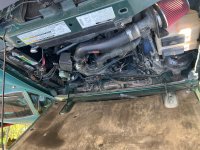- Joined
- Sep 30, 2025
- Messages
- 4
- Points
- 1
- City
- Cumberland Furnace
- State - Country
- TN - USA
- Vehicle Year
- 1999
- Vehicle
- Ford Ranger
- Drive
- 4WD
- Engine
- 3.0 V6
- Transmission
- Automatic
Just picked up a 99 w 145K, body needs minor work. I see it says misfire in cylinder 6. Compression test showed 152PSI. Lacks power on acceleration & I noticed that when driving fast and/or under load Air vents go to defrost. taking load off goes back to vent. Sounds like a vaccum leak, but checked all the usual suspects. Any thoughts or suggestions? New plugs new wires. Also suspect Injector possibly, but I really didn’t want to have to yank off the intake.













